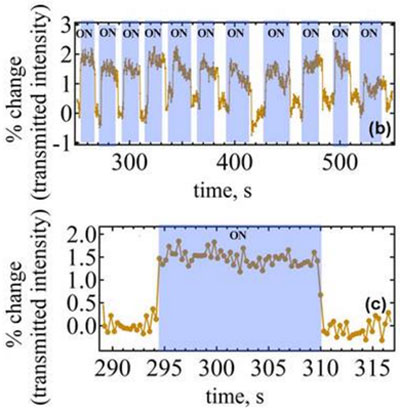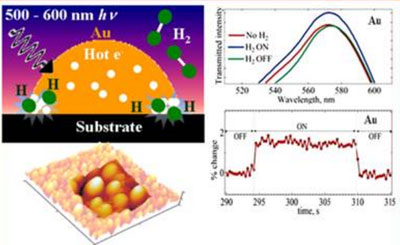Chemical Detection of H2 Gas
We have, in collaboration with the group of Dr. Eric Borguet (Chemistry Dept., Temple University), demonstrated the optical detection of H2 using substrate-immobilized Au nanoparticles. Prior to the discovery, plasmonic sensing modes for H2 were indirect in that they required the Au nanoparticle to be in close proximity to Pd; detection occurs because the uptake of hydrogen by Pd triggers changes to the dielectric environment of the Au nanoparticle which results in a shift of a localized surface plasmon resonance (LSPR). Our discovery demonstrated that the hot electron-induced photocatalytic activity of standalone substrate-based Au nanoparticles was sufficient to enable the rapid (< 1 s) detection of H2. Detection was possible by merely measuring changes to the transmission of light from an incandescent bulb which was filtered to become resonant with the LSPR. The surfactant-free nature of the nanoparticle synthesis is important to the detection mode in that it allows for intimate contact between the H2 molecules and the Au nanoparticle and eliminates unwanted reductions to the hot electron lifetimes caused by surfactants. Further benefit was derived from the near-hemispherical shape exhibited by substrate-immobilized nanostructures formed through solid state dewetting since such structures give rise to strong plasmonic near-fields at the nanostructure-substrate interface.


Real-time monitoring of the transmitted light through substrate-based Au nanoparticles during the on/off cycling of H2. Plasmonic near-fields for a spherical and hemispherical Au nanostructure.